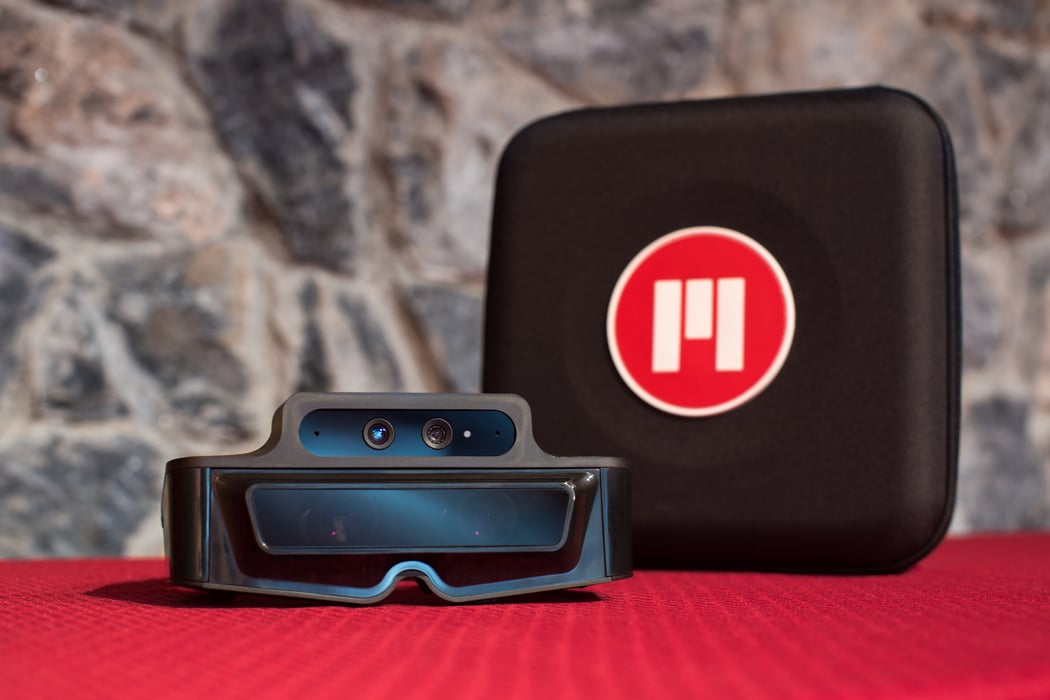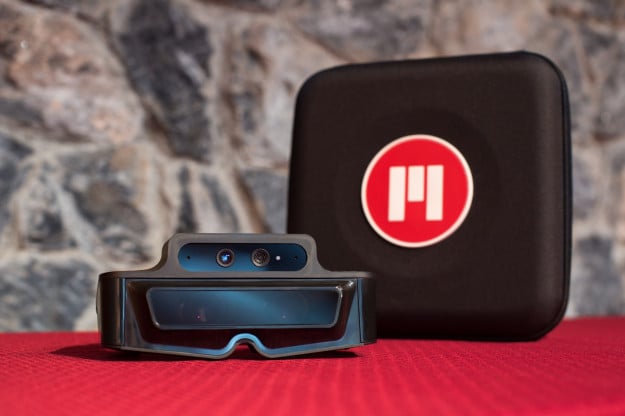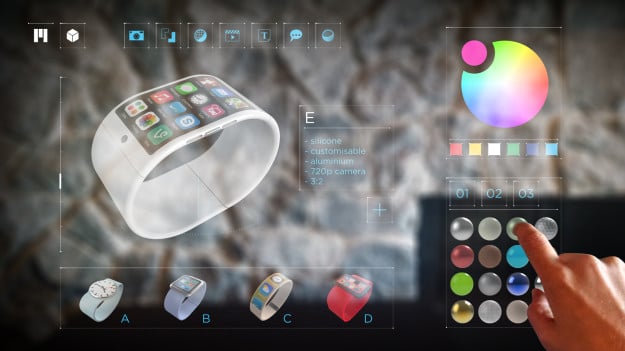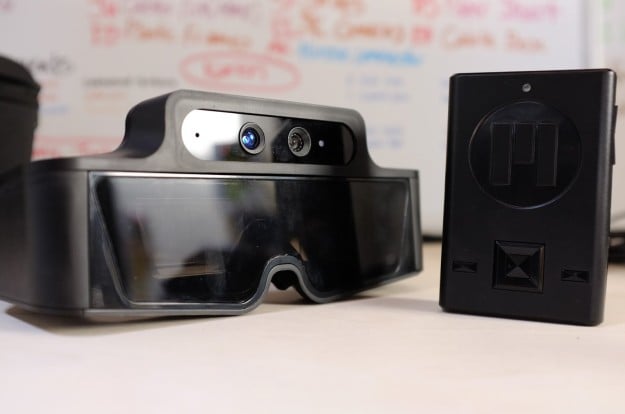
We’re excited to collaborate with Meta, the first wearable, Augmented Reality computer, for a hackathon in San Francisco March 6 and 7, 2015. In anticipation of the hackathon and for inspiration about how Augmented Reality and 3D printing can complement each other I asked Soren Harner, Chief Product Officer at Meta, to tell me more about how Augmented Reality be a tool for designing 3D printed products.
Interested in attending the hackathon on March 6 and 7 in San Francisco? For 50% off the registration enter the code MetaShapewaysHacks.
Please introduce the Meta products and tell us a little bit about how you have been developing them.
Meta is the first wearable Augmented Reality computer that lets you create and share digital objects in the real world. Meta’s Augmented Reality (AR for short) platform has attracted thousands of development groups who are building professional and gaming applications for numerous industries and we are currently shipping the Meta 1 Developer Kit.
Like most hardware startups, we are incredibly indebted to 3D printing. We created early functional prototypes using 3D printers. In fact, we couldn’t have shipped our first product without them. In the early days, we were creating a new prototype every day.
Augmented Reality, like 3D printing was a few years ago, is a technology that has been in the works for awhile, but is only just now becoming more available to the “average” person.

The Meta 1 Developer Kit
How do you foresee augmented reality will develop in the next few years?
Steady as she goes; our chief scientist, Steve Mann, has been working on AR since the 1970s. What we see now, more than ever, is smaller components at more affordable price points and more readily available. Advancement of GPUs and the miniaturization of emerging technologies, like displays and cameras, in cell phones makes it easier to create powerful AR devices.
However, as with VR, we understand we’re embarking on a journey. In the next few years we will see form-factors improve and an ecosystem of augmented reality apps develop and evolve. We feel this maturation is required before wide-scale adoption happens.
What connections do you see now, or hope to see, between augmented reality and 3D printing?
We see AR and 3D printing in complimentary and very similar fields. Just as 3D printing speeds up the manufacturing prototyping feedback loop, AR can speed up the modeling feedback loop before sending it to a 3D printer.
We’ve used Meta as a print-preview function for 3D printing. You can do more than see the object: you can place the object, at scale, in the physical location where you plan to use it. This gives you a sense of live perspective – a CAD model doesn’t do that.
The real benefit is after you have the model. For example, if you were designing jewelry you could easily design, edit, size, resize, change materials and colors customized for the designers body shape. It comes down to having a perspective of objects within the actual physical space. You can see your model in the environment instead of just on a 2D screen.

Can you explain some of the design applications that have been built for Meta and how they could create files that are 3D printable? What else do you hope developers will create to bring together augmented reality and 3D printing?
We’ve built a 3D viewing application which allows for intuitive interaction with objects. It is available as part of our SDK in our developer portal. It allows you to select a 3D model from a library of objects and interact with them. We also provide the source code in the dev portal. We’d love it if someone at the upcoming hackathon would extend the app to allow for STL export (hint hint). Even better, we’d like the app to have basic mesh editing so that you could morph the model from within Meta.
We’d like to see tighter integration between Meta and CAD systems. Currently, files need to be converted to the .obj format for use in Meta. Another opportunity is to look at how individually printed pieces fit together into larger assembled parts. Imagine testing joints and how various parts fit together; that would really smooth out the end-to-end use-case.
It would be interesting to close the loop: 3D photocopying. Use the Meta depth camera to create a 3D scan of an object and then print it on the 3D printer. In a sense, this would be like duplication from the mere sight of an object.

Ultimately, we are part of the same 3D ecosystem. As depth cameras and light-field cameras become more commonplace, I think we’ll see an explosion of 3D content. This ecosystem is just going to get bigger. We also believe 3D printing combined with AR will be especially powerful in education and training. Imagine visualizing molecules in a lesson, printing them and then passing them around.
We’d really like to urge people to come to the hackathon. We’re bringing together developers, hackers, AR enthusiasts, and leading minds in the AR industry. Uber talented Meta engineers will be on hand for the two day event at the gorgeous Wix lounge in San Francisco’s SOMA district. Attendees will present their apps to possibly win a Meta 1 Developer Kit and a 1 year Unity Pro license, as well as Shapeways credit for the Design Award. You can register now and use the code MetaShapewaysHacks for 50% off registration.


